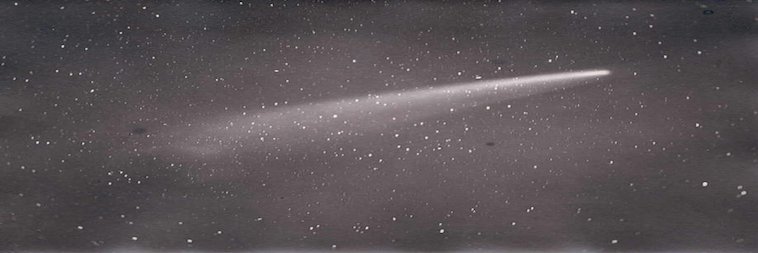The History of Astrophotography
 Sir David Gill, 1843-1914, Public domain, via Wikimedia Commons
Sir David Gill, 1843-1914, Public domain, via Wikimedia Commons
When were the first pictures of space taken with a camera? Read on to learn more about the history of astrophotography.
What year did the first images of space make their way onto photographic negatives? In 1839, Louis Jacques Mande Daguerre took the first photograph of the moon. It did not turn out too well. A year later, in 1840, John W. Draper captured a better image of the moon. In that same year, the first postage stamp was issued featuring a black and white image of Queen Victoria. William Henry Harrison (Whig) defeated Martin Van Buren (Democrat). Harrison died only 30 days after taking office, making John Tyler the first vice-president to ascend to the presidency. When John Draper took his successful photograph, it took 20 minutes to capture the moon on a daguerreotype image using a 5-inch reflecting telescope.
The Great Comet
Sir David Gill was a Scottish astronomer, known for measuring astronomical distances, for astrophotography, and for geodesy. He spent much of his career in South Africa.
The invention of dry plate photography by Richard Leach Maddox made Gill realize that the process could be used to create images of the stars. As a result, he could easily determine their relative positions and brightness. Gill collaborated with Dutch astronomer J. C. Kapteyn to compile an index of the brightest stars. They also documented the position for almost a half million southern stars. Gill also played a leading role in the organizing of the Carte du Ciel. This project involved mapping the entire sky. As a pioneer in the use of astrophotography, he photographed the Great Comet of 1882.
Beyond The Human Eye
Astrophotography allowed astronomers to capture and record data unlike any other time in history. They could document the Moon, Sun, and planets. They also learned that the photographic plates could capture dim stars, nebulae, and galaxies by extending the exposure time. Due to these long exposure times, they encountered technological problems. The daguerreotype process could only capture the brightest objects in the sky.
“Daguerreotype-a photograph taken by an early photographic process employing an iodine-sensitized silvered plate and mercury vapor.”
The wet-collodion process captured good detail but limited the exposure time to how long the plate could stay wet. In addition, photographers had to make telescopes rigid enough that they would not sag out of focus during the exposure. They also had to build clock drives to rotate the telescope at a constant rate. A clock drive allows the telescope to stay fixed on a certain point in the sky without having to be constantly re-aim it due to the Earth’s rotation.
Charge Couple Device
In the 20th century, two astrophotographers, Miller and Malin, applied color photography to astronomical imaging. This advanced astronomical photography. The advent of the Charge Couple Device (CCD) in the 1970s allowed light detection. This made digital color camera possible. The color images we see today comes from this technology.
Modern multiwavelength astronomy began in the late twentieth century. As a consequence, astronomers could learn more about the universe. It helped them to see beyond the naked eye. They have more data collected from these images then they could read in one lifetime. Supercomputers must help them sort through all the data collected this way.
Capturing the beauty of space is easier today than 150 years ago. With those astonishing images, we learn more and will keep exploring more about the universe.
